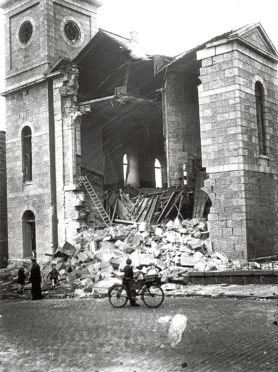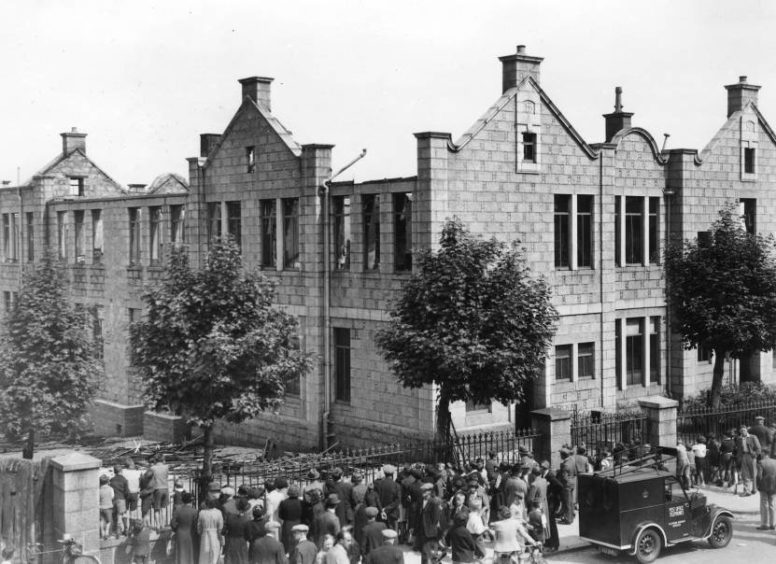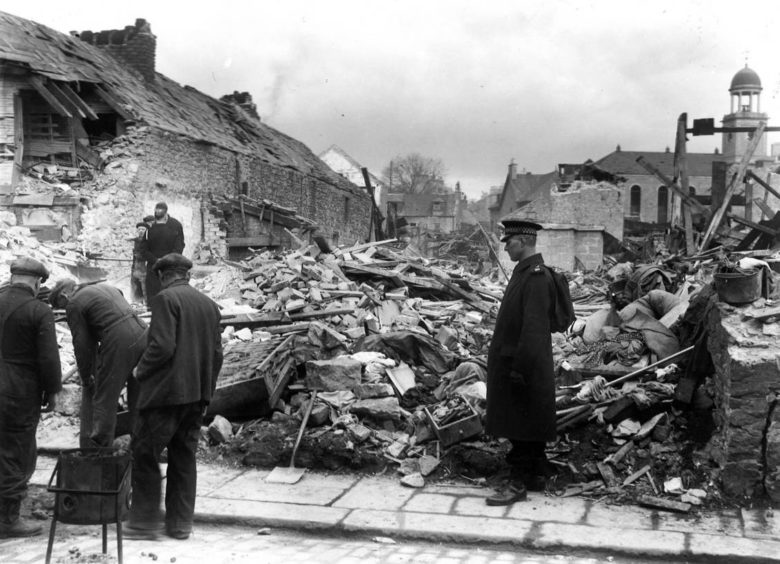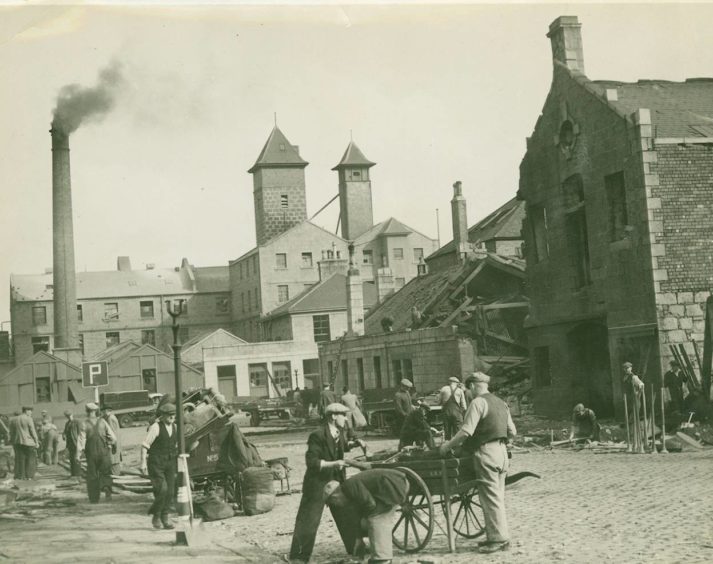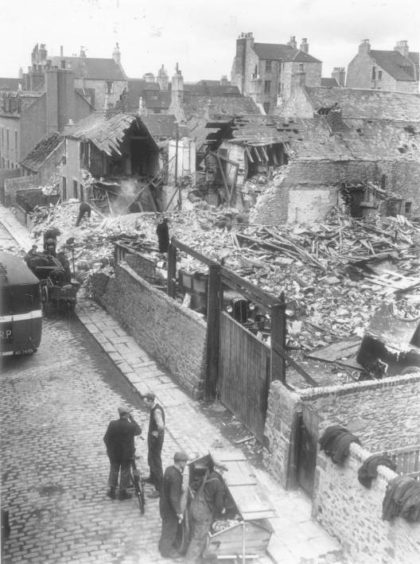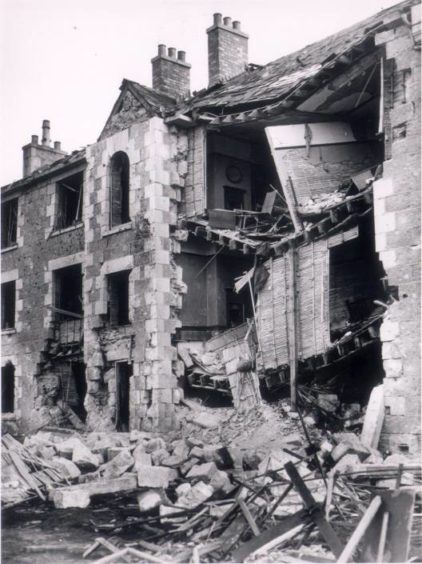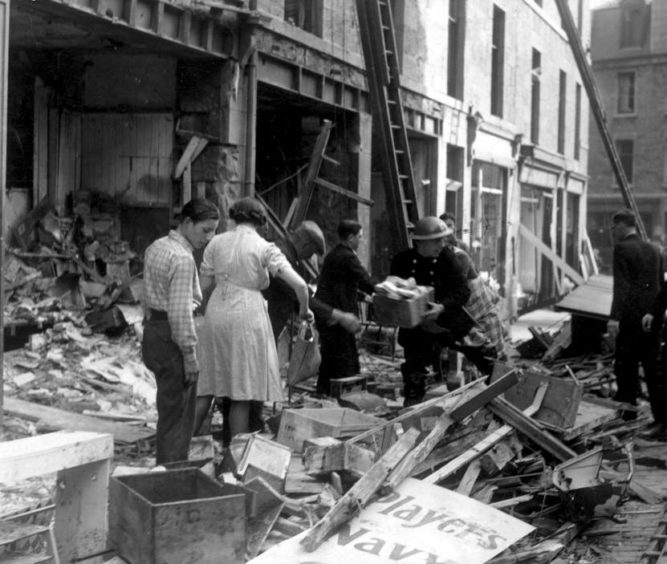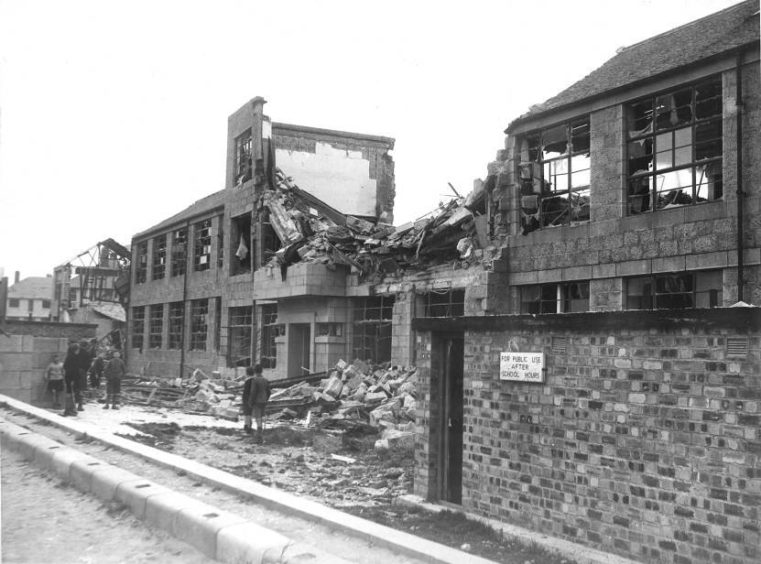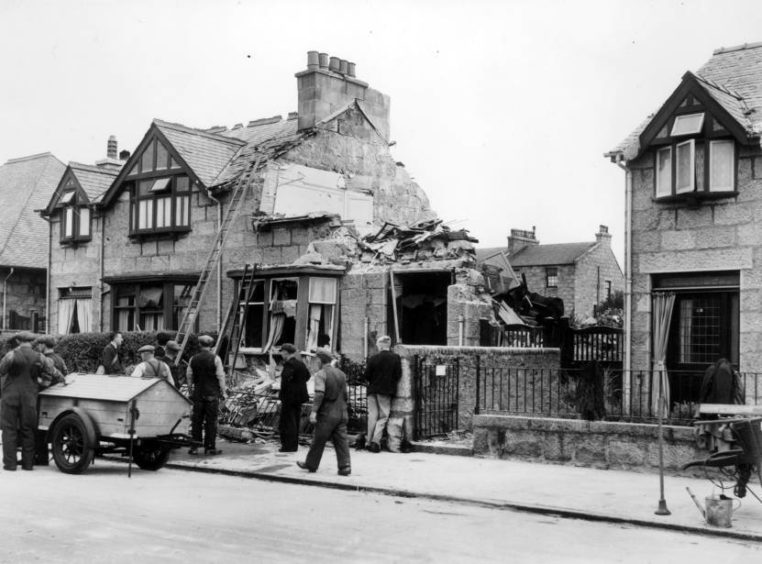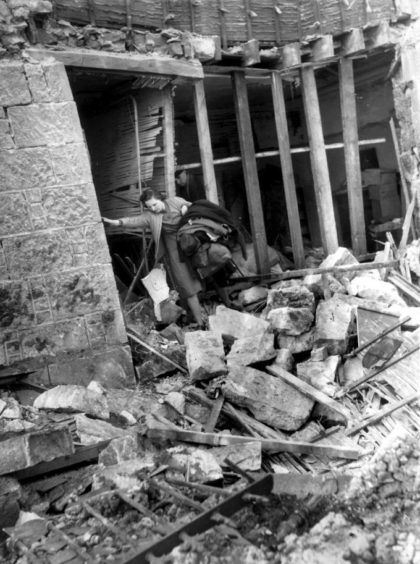It was 75 years ago tonight when Aberdeen experienced one of the darkest days in its history.
On Wednesday, April 21, 1943, the city experienced its worst air raid of World War 2.
In the space of just 44 minutes, 127 bombs fell, damaging or destroying more than 12,000 homes and killing 98 civilians and 27 soldiers.
Even though Aberdeen was the most frequently bombed city in Britain between 1940 and 1943 – a statistic that prompted the nickname Siren City – the scale and severity of that night’s Luftwaffe raid shocked everyone.
Dr Fiona-Jane Brown, founder of Hidden Aberdeen tours and author of Hidden Aberdeenshire: The Coast, said: “It took a terrible toll on the city’s buildings and people.
“98 civilians were killed on that night – 70% of the total number of civilians killed through the whole war in Aberdeen was on that night.
“At 10pm on April 21, 1943 about 20 Luftwaffe planes appeared around Middlefield and started bombing.
“It was absolutely devastating.
“The impact that it had really can’t be underestimated.
“The next day, people really didn’t know what to do.
“12,000 houses were damaged to a greater or lesser extent in that night.”
Map best viewed on desktop.
Dr Brown said: “Although London was, of course, the most heavily bombed city, Aberdeen was the most frequently bombed.
“Aberdeen was actually nicknamed Siren City by the press at the time.
“The Evening Express’s front page on April 22 was actually about the bombing.
“However, due to laws that had been introduced at the time to protect morale, they weren’t able to mention the city by name.
“It was very clear by the photos what it was, though.”
https://www.eveningexpress.co.uk/fp/news/local/map-every-aberdeen-street-bombed-germans-ww2/
On top of the civilian casualties, dozens of military personnel were also killed when a bomb was dropped on the Gordon Barracks.
Dr Brown said: “As well as 98 civilians, 27 soldiers based at the Gordon Barracks were killed when a bomb was dropped on their canteen.
“Because of the force, it was quite hard to identify most of the bodies.”
Some of the other buildings most badly hit by the bombing were Middlefield School, the houses on Bedford Road and Royal Cornhill Hospital, which was hit by dozens of bombs.
Dr Brown said: “12 bombs were dropped on Cornhill psychiatric hospital. When people say that civilians were killed ‘accidentally’ I don’t agree with this.
“The Luftwaffe had maps and knew where they were dropping the bombs.
“I think targeting Cornhill Hospital was very deliberate, given the Nazis’ known hatred for anyone that was different.
“You don’t accidentally drop 12 bombs.”
Much of the history surrounding the events of April 21, 1943 were lost for many years before Grampian Police Archives put on a display in 2010, which Dr Brown was heavily involved in.
Dr Brown, who is hosting a tour today to commemorate the 75th anniversary of the bombing, emphasised the importance of remembering these events.
She said: “It’s very important to keep remembering that Aberdeen really was very badly bombed.
“Because of our proximity to Norway, which was under Germany occupation, the city was constantly bombed.
“The survivors of the blitz that can now remember it are in their 80s now and it’s important that every generation that comes after them continues to commemorate what happened.”
Dr Brown will be holding the Hidden Aberdeen tour looking at the bombings today at 2pm, kicking off at the Aberdeen City Council depot on Powis Terrace.
